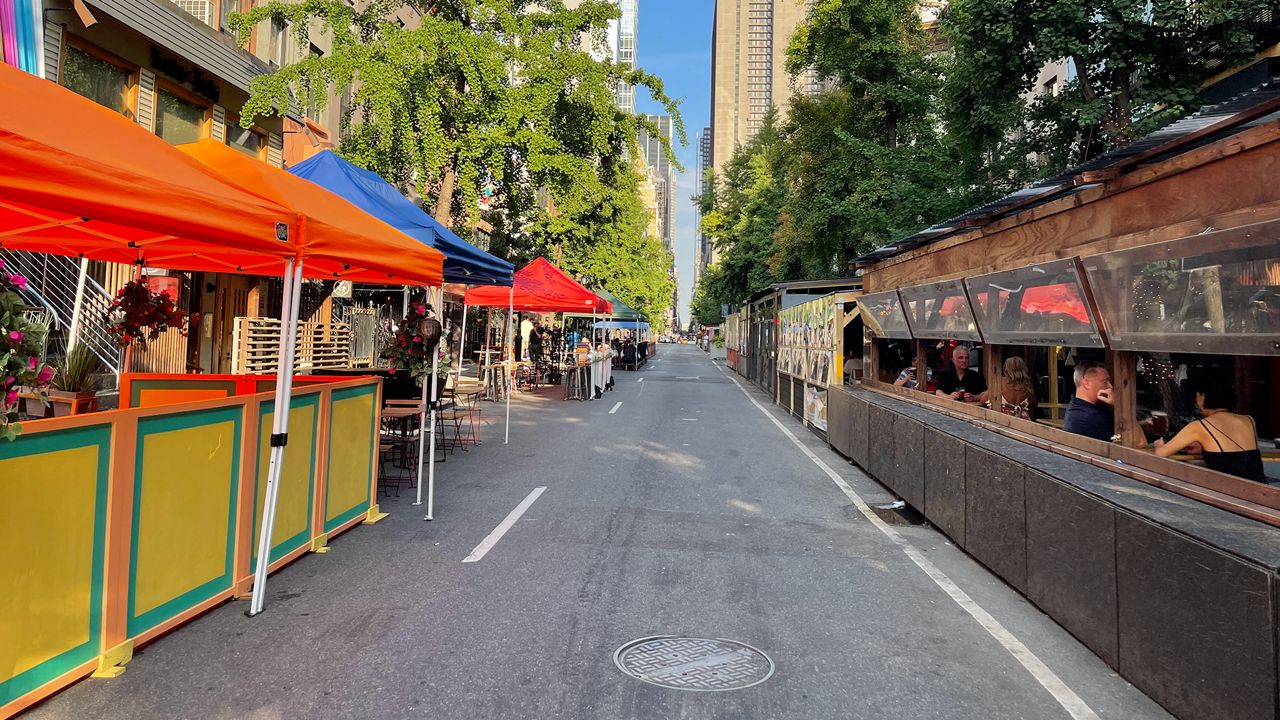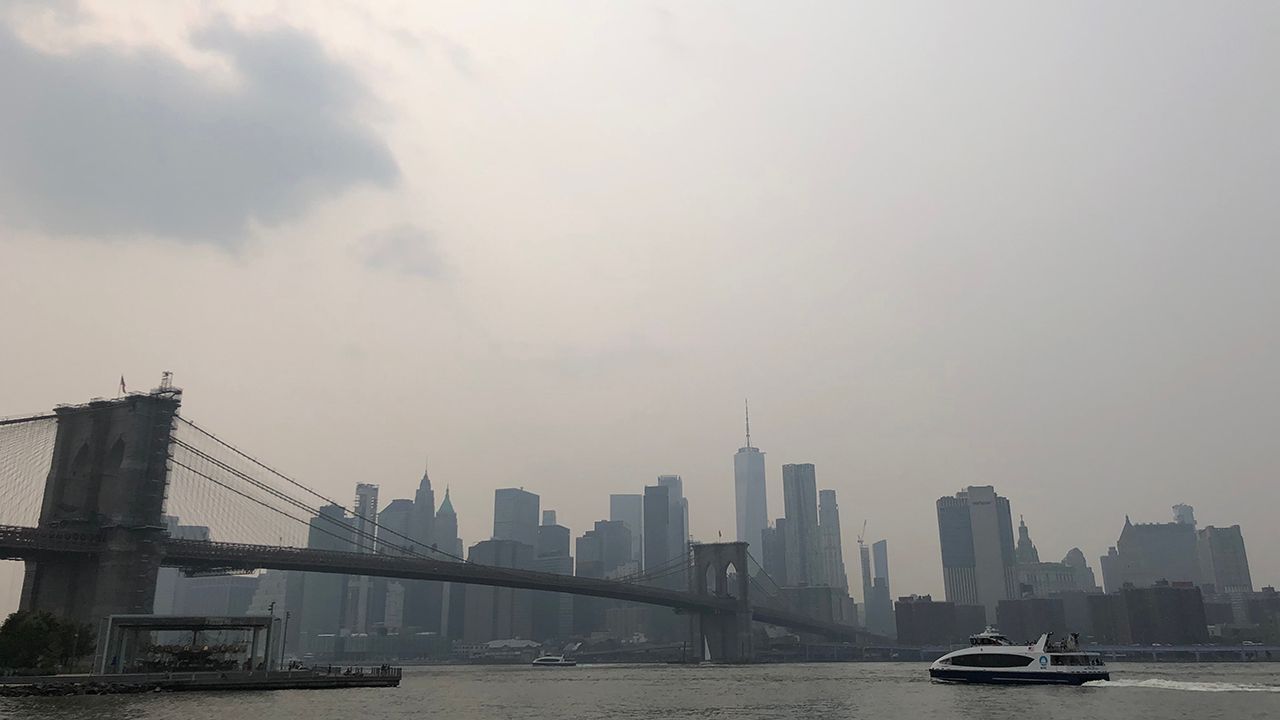As the city moves to make its outdoor dining plan permanent, residents across the city say they don’t want the pandemic-era expansion in their neighborhoods.
From trash issues to noise complaints, people have been gathering at community board meetings over the past week as the city’s Department of Transportation introduces a long-term plan.
On Tuesday, more than 100 people gathered at The Boys Club in the East Village for the community board meeting. The crowd heckled and booed the speakers, who struggled to get through their presentation on the city’s plan to expand and make permanent outdoor dining in New York City.
“We do not want this,” said one man at the meeting, who said he has lived in the neighborhood for 40 years. “This is not Tampa. This is not Las Vegas. This is a residential neighborhood. This is where people raise families.”
“I live across the street from two restaurant shacks that take up five parking spots, and we have a family of rats in front of our building,” resident Allie Ryan said at the meeting.
The city revised its rules during the COVID-19 shutdown and created an emergency outdoor dining program to help offset the losses the restaurant industry faced.
Before then, the existing “Sidewalk Cafes” program under the Department of Consumer and Worker Protection required a much lengthier application process involving engineering designs, insurance and licensing fees.
Approval under the old program in some cases took six months to a year.
More than 11,700 restaurants took advantage of the emergency outdoor dining program over the past year, according to city data.
The mayor last September announced he would be making the program permanent. The effort requires updating the pre-pandemic program through a series of legislative changes, which is expected to take about a year.
The first step in the process is creating zoning amendments. This would allow restaurants that would normally be hindered from participating because of zoning restrictions in their neighborhood to apply for the program if they can meet certain requirements, such as sidewalk distance requirements.
This change is the crux of the issue for many of the people opposed to the program.
“What’s about to happen with the zoning amendment is really scary because it's about to change the zoning forever in New York City,” said Diem Boyd, a Lower East Side resident. “It's about one industry and developers and real estate about to basically control this market and have all of this public land basically. Probably one of the city's biggest land giveaways in its history, and with very little public input or consideration of people's quality of life.”
But this isn’t necessarily the case, according to a DOT spokesperson at the meeting, who said that new restaurants hoping to open in non-commercial zones must still go through the city’s land-use review process.
The permanent program would allow certain restaurants that are currently operating under the city’s emergency program to continue to do so under the new framework.
Still, many opponents fear the change will ultimately affect the diversity of retail operations across the city.
“A pet shop or a florist — they're going to get cannibalized by this because landlords are being given this road bed and sidewalks so that's extra footage for them,” said Boyd, who has been organizing around this issue with Neighborhoods United. “They're not going to want a florist there because they're going to be able to put food and beverage in there and raise the rents.”
It’s something Ellen Koenigsberg, who owns a small vintage clothing store in the Lower East Side, worries about as well.
She said that while outdoor dining may create more foot traffic, this doesn’t translate to business.
“They're not shopping for me,” she said. “They stand in front of my store and drink and smoke, and my store is completely obstructed.”
Her storefront is sandwiched between what she calls “two giant plywood huts,” which also exacerbates trash problems in front of the store.
“It’s a nightmare,” Koenigsberg said.
The proposal will put outdoor dining entirely under the purview of the Department of Transportation, which will also be tasked with enforcement, another issue that stoked the ire of opponents who say they’ve struggled with getting the NYPD to handle complaints.
“If NYPD can't handle a mob of drunk people, I don't think the DOT is going to be able to do it,” said Boyd.
According to another DOT spokesperson at the meeting, enforcement has been a learning curve over the past year for the department, but will be refined moving forward.
“For the permanent program, DOT will be hiring additional inspectors, since all of our current inspectors were taken off of other projects to work on Open Restaurants,” according to a statement from DOT. “They will be enforcing regulations on structures, keeping paths clear, and maintaining proper distances from obstructions, as they have since the launch of the initiative.”
At a meeting of Community Board 4 on Wednesday, which represents Hell’s Kitchen and Chelsea, residents were also vocal in their dissent.
“People are inside these sheds drinking, smoking pot, doing drugs,” one man said.
This Midtown resident said the activities that go on in the outdoor dining sheds keep him up until 4 and 5 a.m. sometimes.
But not all attendees at Thursday’s meeting were against the proposal.
“New York is a world-class city. We don’t have a world-class al fresco dining, and we should, right?” John Challice said. “Anyone who has traveled to any city that does, like Montreal, Paris, Madrid, knows what it feels like. We should have that.”
According to a DCP spokesperson, the public review process, which includes presentations to all 59 community boards and five borough presidents, provides numerous opportunities for public input. They also said that there will be future meetings for residents to help shape the permanent program.
The current Open Restaurants program will continue through winter of 2022.








